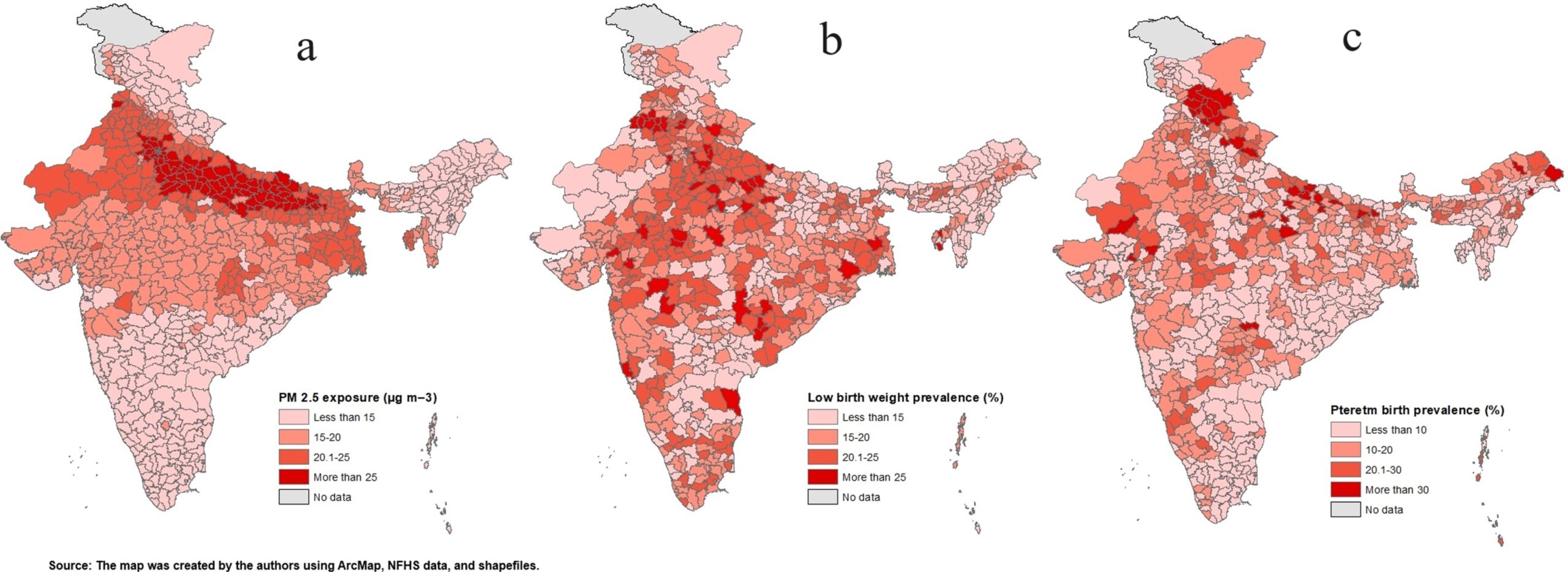A new study has found a link between in-utero exposure to fine particulate matter and low birth weight and preterm birth in India.
Researchers from the Indian Institute of Technology Delhi investigated the relationship between in-utero exposure to ambient PM2.5 and adverse birth outcomes at the district level across India – the first such study to explore this association at such a granular level in India.

Using National Family Health Survey data, combined with air pollution estimates, it was seen that increased exposure to ambient PM2.5 during pregnancy is significantly associated with a higher likelihood of both low birth weight (LBW) and preterm birth (PTB).
They found that the chances of PM2.5 exposure leading to PTB are higher than those for LBW. Indoor air pollution, particularly from solid fuel use, also plays a crucial role in the incidence of LBW
The North-Eastern states, which are traditionally less burdened by air pollution report lower rates of LBW and PTB, whereas northern states such as Delhi, Punjab and Uttar Pradesh show higher PM2.5 concentrations and a correspondingly greater prevalence of adverse birth outcomes.
The study attributes these pollution levels to sources such as residential biomass burning, industrial emissions, transport and agricultural practices such as crop residue burning. During winter and post-monsoon, residential sources become a particularly significant contributor to PM2.5 levels.
It was also noted that factors such as temperature and rainfall significantly affect maternal and neonatal outcomes. High temperatures can cause maternal heat stress, dehydration and affect the function of the placenta, increasing risks of PTB and LBW.
Excessive rainfall and flooding can also increase exposure to waterborne diseases, disrupt healthcare access and worsen malnutrition in the mother, all contributing to poor birth outcomes.
To address these challenges, the researchers say comprehensive strategies are essential: ‘ The National Clean Air Program should be intensified, with stricter emission standards and enhanced air quality monitoring. Integrating air quality data with health surveillance systems will enable precise identification of at-risk populations.
‘Additionally, policies promoting clean cooking fuels and energy-efficient technologies can reduce indoor air pollution. Climate adaptation strategies, such as developing heat action plans and improving water management, should be incorporated into public health planning to mitigate the effects of extreme temperatures and irregular rainfall.
‘Public health initiatives must raise awareness about the risks of air pollution and climate change, particularly among pregnant women.’
The full research can be read here.
Image: the map was created by the authors using ArcMap, NFHS data, and shapefiles.

















Leave a Reply